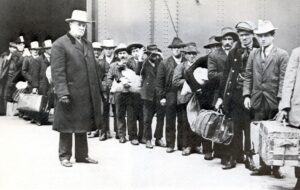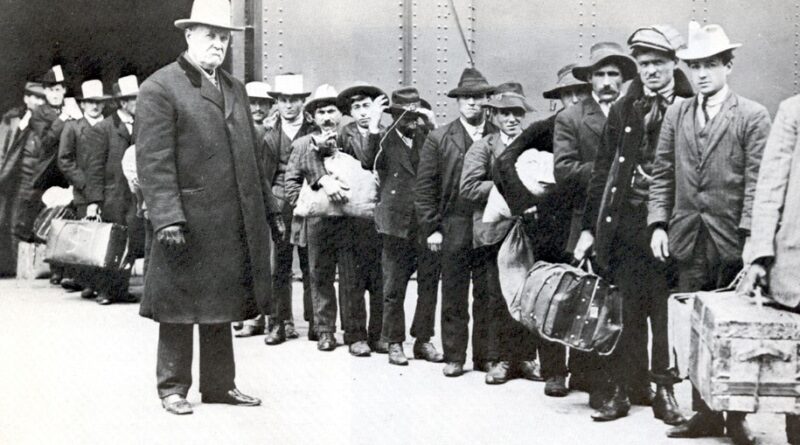The Path to America: Tracing the Journey of Immigrants to the United States

At the height of Italy’s mass emigration during its century-long mass exodus between 1876 and 1976, the U.S. was by far the greatest recipient for Italian immigrants. Their impact wasn’t as great though; that was likely due to hundreds of thousands of migrants from various nations entering simultaneously while native-born Americans made up the majority ethnic group. Yet Italian immigrants played an important role socially, many attaining national stature across many fields of endeavor.
At its peak in 1850, only 4,000 Italians lived in America. Within four years of immigrating, however, that figure had skyrocketed to 44,000 before rapidly increasing to 484,027 by 1900. Southern Italian immigrants made up most of this increase between 1880 and 1900 as southern Italian immigration took place at that time. While Italians may have become one of the larger foreign origin groups within American cities during this timeframe, Italians only comprised 1.5% of U.S. population at its height.
Since there was no longer an abundance of cheap land available in America, Italian immigrants who once relied heavily on agriculture became predominantly urban. Starting at the bottom of occupational ladder and working their way up, Italians performed jobs such as shoe shining, ragpicking, sewer cleaning and any other hard, dirty and dangerous tasks others didn’t want to perform themselves – including even children working early at their education’s expense! Contrary to Italy however, Italians were known for not accepting charity or engaging in prostitution to raise money – another reflection of patterns present there.
As is common throughout the world, Italians in America clustered into groups related to their place of origin – Neapolitans and Sicilians settled in different areas of New York respectively while Sicilians from different provinces lived on distinct streets. But Italy enclaves were rarely found in America; rather they would disperse among other immigrant groups like Irish, Jews, Germans, and Poles while remaining within clusters of their own. Immigrants would typically settle in different regions based on where they came from in Italy; Sicilians settled in New Orleans while Neapolitans and Calabrians resided in Minnesota and mostly northern Italians resided in California. Most Italians were concentrated in mid Atlantic states around 1910 with 472,000 in New York alone and nearly 200,000 living in Pennsylvania at that time.
Living conditions for Italians across America were typically overcrowded and filthy; Italian laborers would also cut food intake to save money. With time and new generations of Italians coming through, both dirty living conditions as well as complaints of weak individuals due to lack of nutrition became less of an issue.
Italian workers were known for their diligence and sobriety at work. Between the late 19th and 20th centuries, Italians found employment as fishers, shoemakers, waiters, fruit sellers, tradesmen and unskilled laborers in mines and construction jobs – often rising through economic ranks via blue collar work rather than entering an academic profession.
